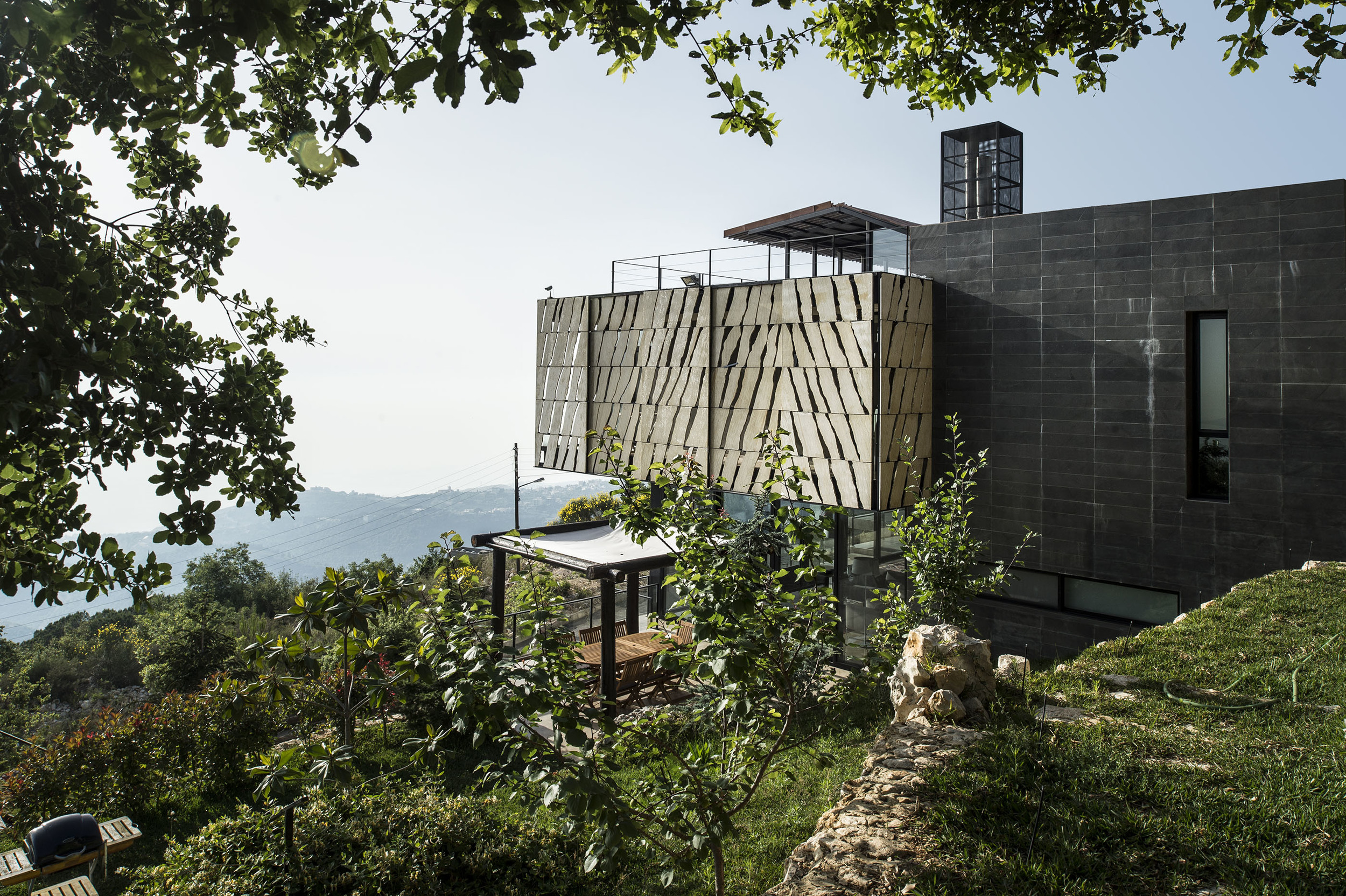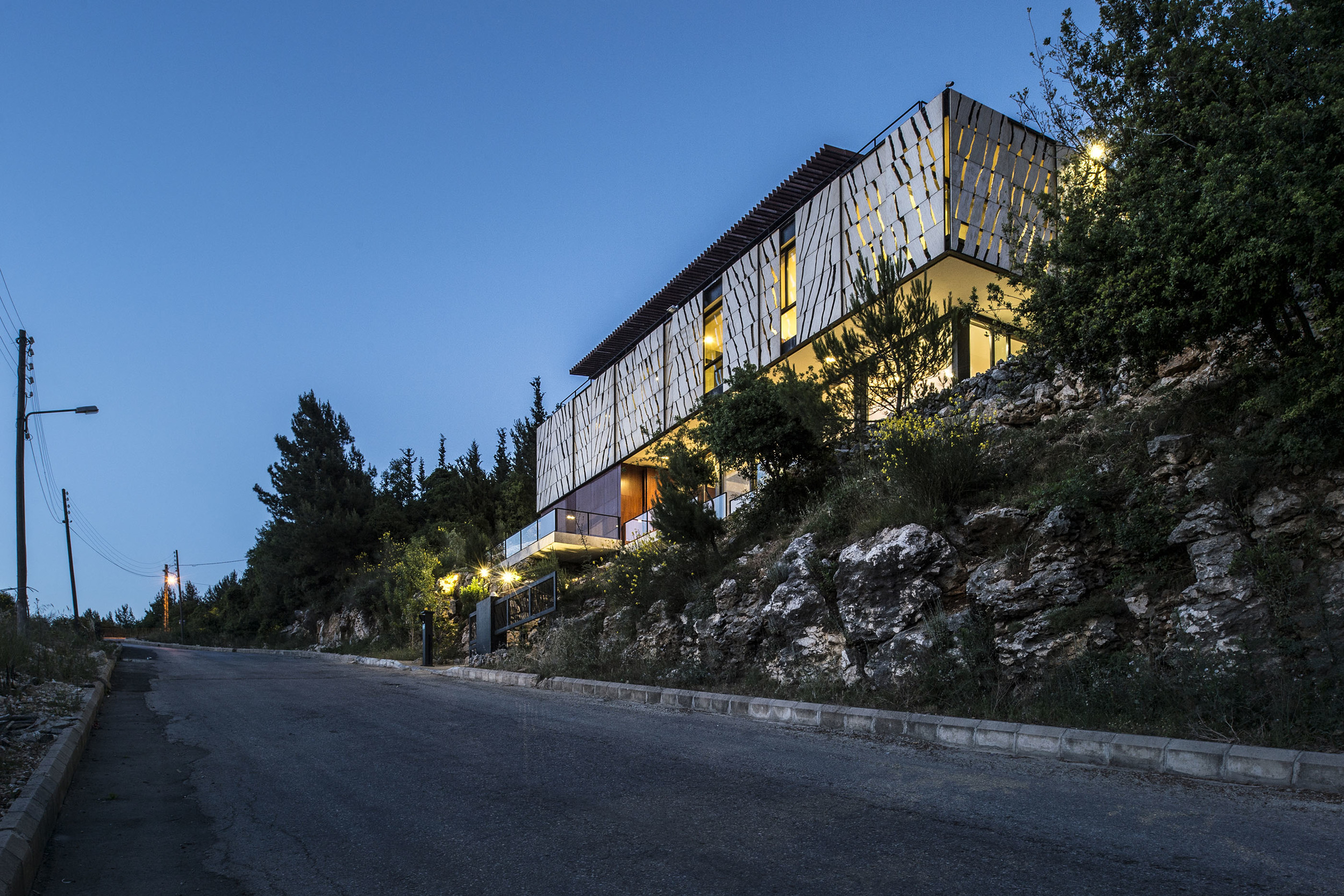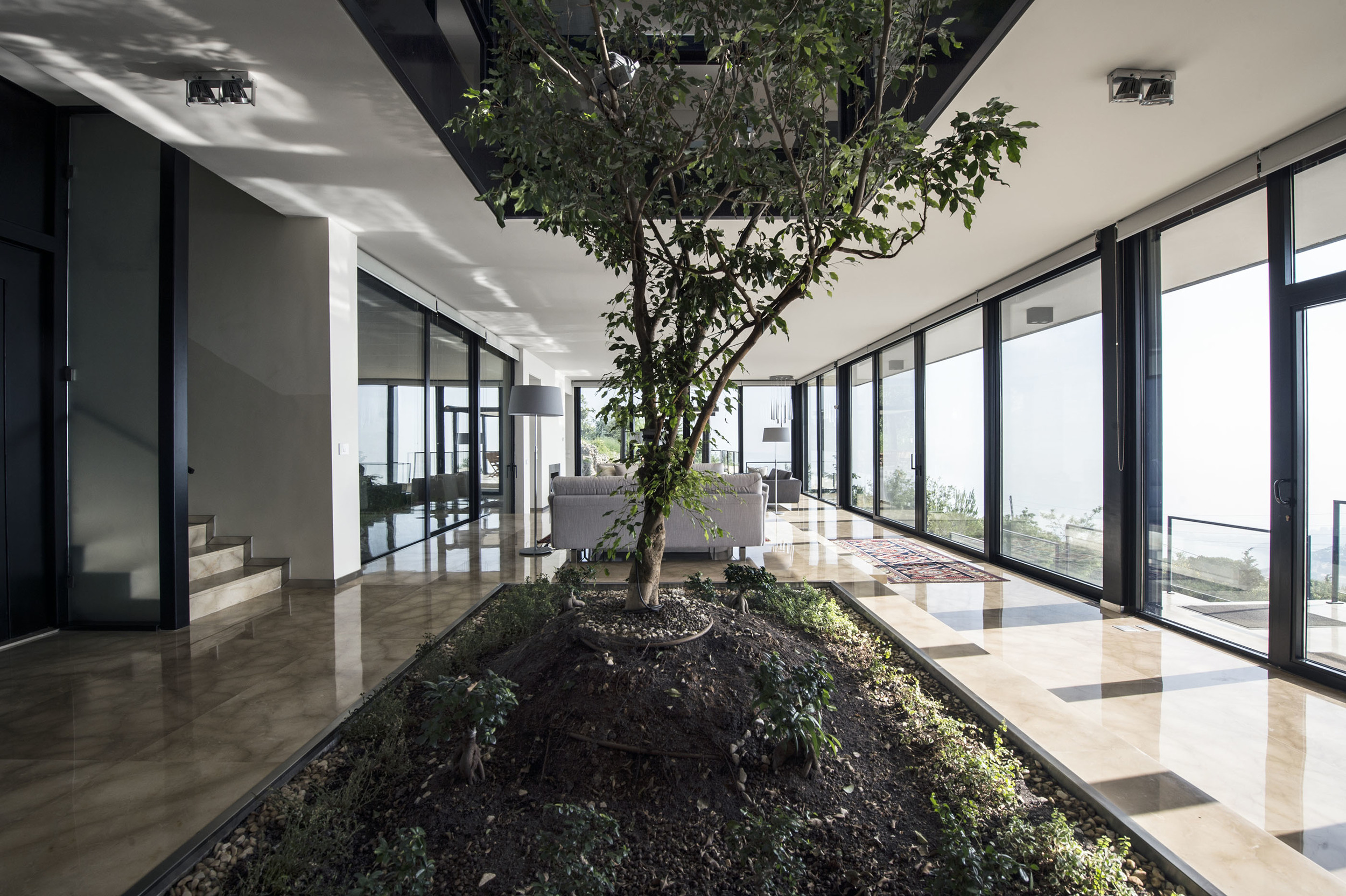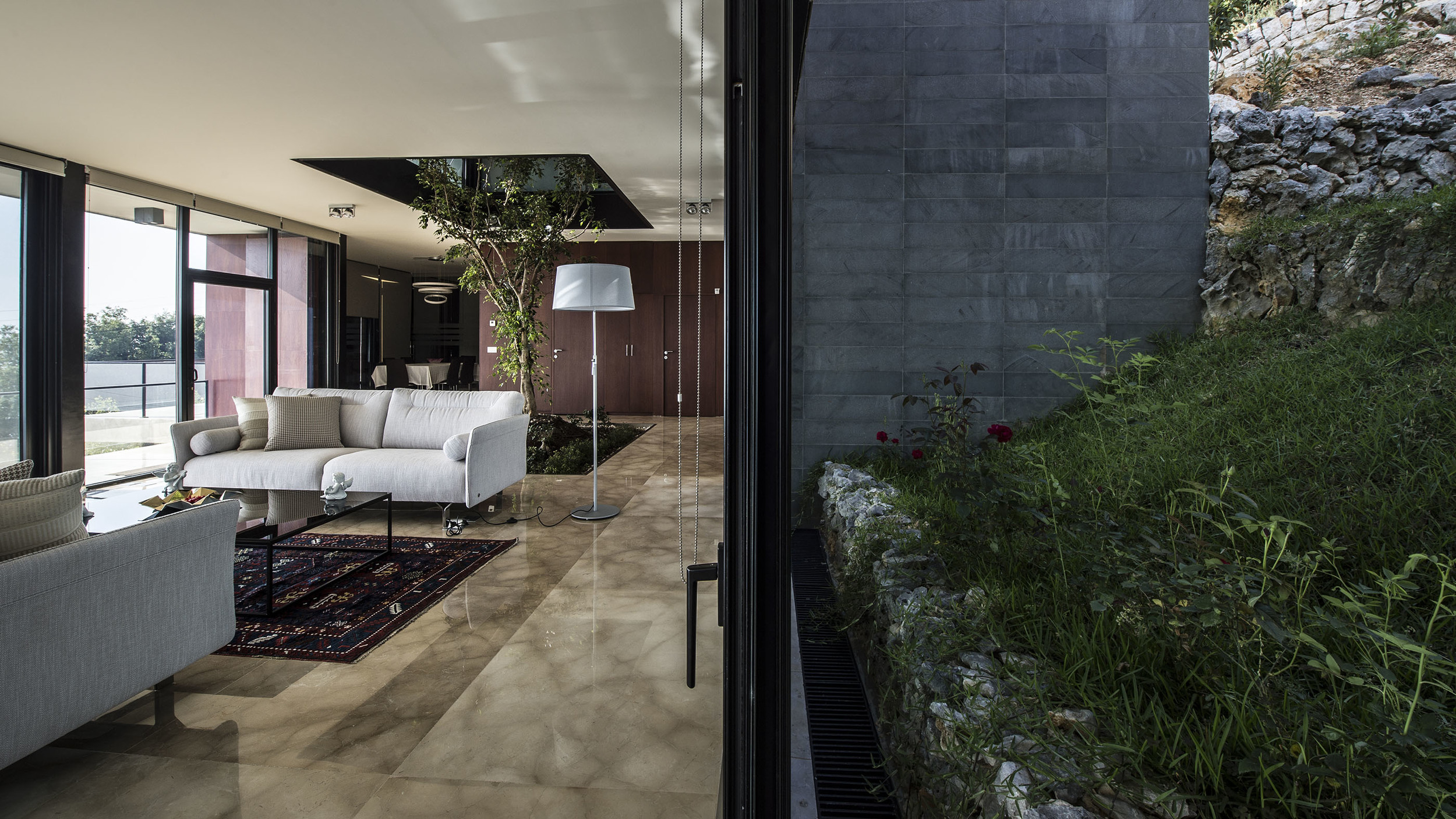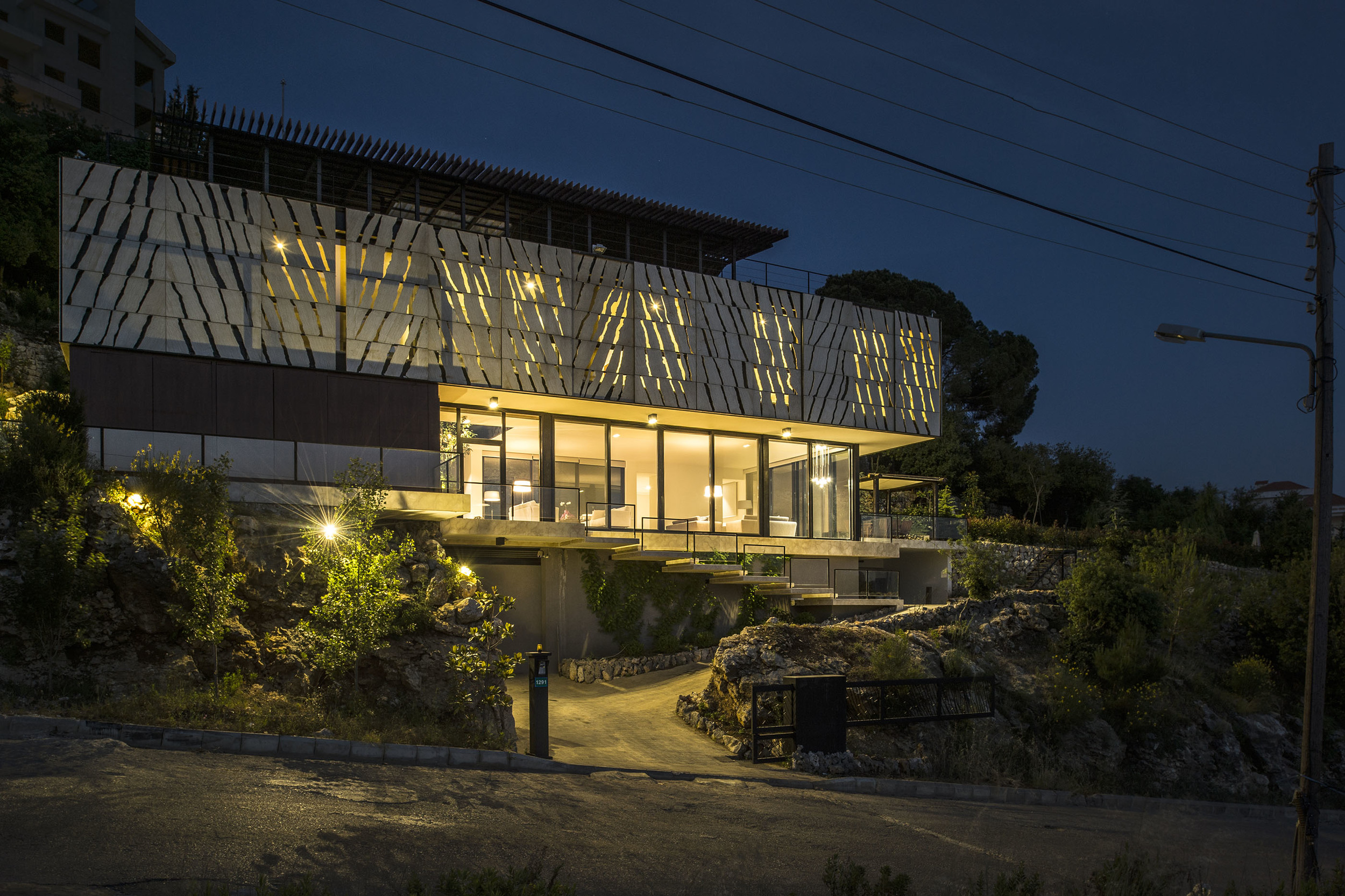In the intent of benefitting from the spectacular panorama towards the bay of Jounieh, the house frames the view through a series of platforms below as well as a suspended horizontal box above. The position of the house is therefore optimized to enhance this view at a maximum while respecting the sloped nature of the terrain. It was conceived as an architectural adaptation of the rocks that characterize the surrounding scenery: a massive volume, seemingly floating in the landscape, houses the private living spaces. It is clad with sliding stone panels that echo, in their surface, the texture of the rocks. It rests on a transparent box which is shaped by a series of platforms that adapt to the topography. These form a transition from a stepped access that links the street level to the house, into a balcony, and finally, into the enclosed reception area. At the roof level, a light steel pergola is finished with terra-cotta louvers and contains a painting studio surrounded by a roof terrace.
The final composition - a prismatic stone volume in a landscape topped by a red roof - can be read as a subversion of the traditional Lebanese village house that preserves the fundamental elements present while radically opening up the house towards the view and reinterpreting the surrounding elements of nature (rocks) as dynamic shading devices that let particular sun rays into the private spaces of the house through their seemingly cracked structure.
Project status: Built.
Designed by Karim Nader and BLANKPAGE Architects.
Model photography by Marwan Harmouche.
Photography by Ieva Saudargaitė.
Featured in Archiroots.


